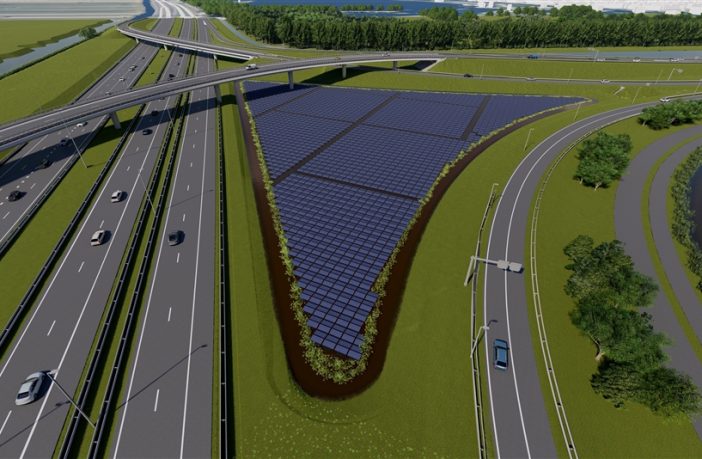- The regional government of the Dutch province of South Holland has announced that a floating PV plant is being built at a junction of the new N434 road that is planned to connect two existing motorways.
- The solar project is part of the Rijnlandroute project under development by French construction conglomerate Vinci.
- It includes the construction of the new road and a 2.2km tunnel segment, as well as the widening of motorway sections totaling 12km in length, and several adjustments on the two motorways.
The solar plant will rely on 4,600 photovoltaic modules with a size of 2m2 each and which will have an east-west orientation. The local government explained that floating PV was chosen as it allows to deploy more panels on a limited space as there is a minimal distance between the module rows. “The advantage here is that the panels are placed low and out of sight in the landscape as much as possible,” it said in a statement.
The PV system will be linked to an unspecified type of flow battery. The power stored in it should be used to power the tunnel at night. “The N434 will consume approximately 2,000,000 kWh of electricity annually, for ventilation, lighting and other installations in the tunnel,” the regional government stated. “One of the other innovations used to save energy is the lighting of the tunnel entrances with solar fiber-optic lenses that collect light and rotate with the sun.”
Several solar power projects are currently being planned or built along, or close to Dutch motorways. Four large scale facilities are being developed close to on-ramps and off-ramps of the A7 highway, which connects Zaandam, in the province of North Holland, to the German border.
Furthermore, Rijkswaterstaat – the water management agency of the Netherlands, under the Ministry of Infrastructure and Water Management – is planning to build a large scale solar plant along Highway 35 in the northeastern Netherlands, and a solar park along the A37 in Drenthe province. Shell also plans to install 48 MW of solar capacity near Rijksweg 59, a highway that spans the provinces of Zeeland, South Holland and North Brabant.
Author: Emiliano Bellini
This article was originally published in pv magazine and is republished with permission











